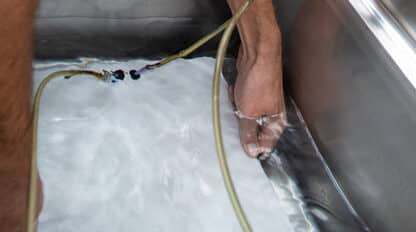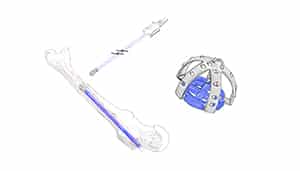Lean Product Development Dramatically Accelerates Time to Market for Laparoscopic Device

CUSTOMER SITUATION
A large surgical technology company was facing competitive pressure and needed to accelerate the market release of a novel flexible monopolar scissors for a new laparoscopic surgical system. The customer lacked the bandwidth to complete product design and manufacturing internally within the desired time frame. The customer was looking for a partner with experience in the minimally invasive surgery space, a proven ability to hit project schedules, design and development expertise, and a quality system that would conform to its own system.
VIANT SOLUTION
Viant formed a dedicated project team of experienced engineers to assess the design of the customer’s nonoperational prototype. Team members identified 4 priorities: optimizing cutting, adding power, adding a rotating coupler, and reducing cost. The team then used Lean Product Development, a systematic process of leveraging design knowledge and discovering unknowns to reduce time to market, improve product efficacy, and reduce costs.
Two Lean tools were key to Viant’s success:
1. Set-based design: In this approach, team members evaluated multiple design options concurrently, eliminating options as they learned from the data they gathered. For example, the team identified effective cutting as the most important performance characteristic. But it wasn’t clear at the start what would make the device perform well. Team members evaluated key design inputs (curve, relief angle, rake angle, squeeze force, lubrication) and isolated 2 key variables that drove product performance: the form (curve) of the blades and the squeeze force. To efficiently evaluate the impact of squeeze force on various form factors, Viant engineers developed a set-based design of experiments (DOE) with ranging studies allowing them to rapidly iterate the design to improve cut cycle performance. This prototype process DOE enabled detailed specification of a production laser welding system that successfully passed process validation the first time through.
2. Root-cause analysis: This tool is a way to analyze and identify the underlying causes of an issue so that the team can implement the most effective solutions. For example, a robust root-cause analysis process revealed that the chemical deburring process was removing too much blade material, which decreased product performance. The Viant team was able to quickly take corrective actions to resolve the issue. The team took similar approaches with other subsystems of the project (torque cable, outer shaft, and handle).
RESULTS
As a result of partnering with Viant and leveraging Lean Product Development, the customer:
- Increased cut cycle performance compared with standard laparoscopic scissors
- Launched a novel product 1 year from nonfunctioning concept prototype phase
- Beat the customer’s best-case scenario time for internal launch by 50%
- Achieved project budget and product cost targets
Working with Viant also accelerated the time to submission to the US Food and Drug Administration (FDA), as well as streamlining the FDA approval process.
As a result of this successful collaboration, Viant was awarded 2 other major projects. The customer also partnered with Viant on a Phase 2 project to develop additional instruments in this product family. Using Lean Product Development principles enabled the team to achieve an 80% COGS reduction from the original design.


